Summer is almost here and you should be bracing yourself to face this season. One of the best ways to stave off summer heat is to take a nice long swim in your pool. Cleaning the pool ahead of time would ensure that your swim is refreshing as well.
Spring is the best time to clean your swimming pool. Special caution should be maintained during draining a pool and the spring temperatures are perfect for it.
Here is a complete guide on how to clean your pool and make it splash-ready!
1. Decide When to Open the Pool
Swimming pools don’t always need to be cleaned if they are properly maintained. However, if you are cleaning them after keeping them covered during fall, it is better to uncover them when the temperature hits a constant mark of 70 degrees Celsius.
You should uncover your pool in warmer temperatures so it doesn’t freeze the water. However, if you wait too long in the warm season to open, then algae may grow and ruin the water.
Considering everything, open your pool when you see a consistent warm temperature for a few days, which can be during spring in colder regions. In warmer climates, a little earlier than spring would be better for opening the pool for cleaning.
You can either clean the pool yourself, hire a professional, or rely on a robotic cleaner that can navigate across all pool surfaces and take out even the dirtiest gunk. Don’t forget to check out https://roboticpoolcleaner.org/polaris-pool-cleaners/polaris-p825-review/ if you want to own one of these robotic cleaners.
2. Drain the Pool if Necessary
Drainage should be done carefully in warm temperatures. Most of the cleaning can be done without completely draining the pool as doing so can sometimes cause damage.
But you should drain the pool if the level of TDS or total dissolved solids – metal, salts, minerals, and other elements – is over the roof. Similarly, if you see white casting due to calcium deposition, it’s time to drain the pool.
Partial draining every two to three years can keep TDS levels under check. This will result in using fewer chemicals and maintaining the quality of the water. If you have an above-ground pool, you may need to drain it completely.
3. How to Drain Your Pool
Draining the pool partially or fully requires some planning. If you do not plan this step properly, the pool may pop out of the ground, cause damage to the pool surface, ruin water drainage systems, and other issues.
You should not try to drain the pool fully without considering the water levels of the surrounding area. This will cause pressure problems. You should use a submersible pump to drain the water.
These can be bought at hardware shops or be rented from pool maintenance places. You can also use a garden hose but that will take at least a day to drain completely.
4. Remove Larger Debris First
If drainage is not needed, remove the large debris such as leaves, branches, etc. with a net. In case of a really dirty pool, you should get all debris out from the bottom of the pool as well.
This should be done before activating robots or chemicals to make sure the latter works properly. Once you have collected all the large debris, you may leave a robotic cleaner to take care of the smaller dirt on the surface, wall, and the bottom of the pool.
5. Vacuum Properly
If you want perfect cleaning of your pool, then you should follow state pool cleaning guidelines and vacuum clean the pool surface.
Vacuum cleaning gets rid of large debris by using the same setup as a filter and backwashing of the pool. The vacuum is attached in place of the filter and skimmer. The vacuum pipe sucks and cleans the water through the pool pump which is then circulated back into the pool.
6. Test the Chemical Levels
Once the debris is cleaned from the pool, the water should be checked for its chemical levels. The ideal pH and alkali level in the water of a private pool should be between 7. 2 – 7. 6 and 80- 120 ppm respectively.
Maintaining these levels at the recommended levels can keep bacteria and calcium from forming.
In order to test the chemical levels in the water, you need a test kit or test strips. These are available online for between $14 and $65.
You can also take a sample of your pool water to your local pool maintenance shop to get the chemical level checked.
7. Balance the Chemicals in Your Pool
Alongside the pH and alkalinity, other factors that indicate the safety of the water in your pool include calcium hardness, Cyanuric acid, TDS levels, salinity, and free chlorine amount.
The free chlorine level should be around 1.0 – 3.00 ppm. Total salinity should be 2700- 4500 ppm. Calcium hardness should be up to 200- 400 ppm and TDS levels should not exceed 3000- 6000 ppm.
In order to balance these levels, you can follow a few methods. For a significantly dirty pool, you can try the chlorine shock treatment. The chlorine shock treatment requires that you put high amounts of chlorine and algaecide to kill all the bacteria and algae in your water.
It is advised to do this at night or evening so that the chlorine isn’t affected by the sunlight.
Liquid or granular chlorine can be used to shock the pool water. you can buy these at a hardware store. After using high levels of these, you should run the filtration system of the pool for at least 24 hours. The safe levels of chlorine are 1- 3 ppm.
8. Filter and Backwash the Pool
There is no limit to the amount of filtering and backwashing that you can do to your pool. This is an important step to regulate the amount of chlorine and dissolved particles.
You should let the water run through the filter for at least one cycle before testing the chlorine and chemical levels to check if it’s safe for swimming.
Don’t forget to backwash your filter if the pressure is on the far side of 8 to 10 pounds. Backwashing helps clear a pool by running water in reverse through the filter. In order to do backwashing properly, check the lubrication of the valve. Lubricate the valve before any leaks occur.
The best type of filter and also the most common one used are cartridge filters. Choose a filter that is suited to the size of your pool.
9. Circulate the Water
Pool water should be regularly circulated to keep it fresh. Once you are done with the chlorine shock treatment and heavy cleaning, you can circulate the pool water when it’s not being used to keep it optimally fresh. Otherwise, you may have to shock every three days with chlorine.
To make sure that your pool water is circulating properly, check if the pump, skimmer, filter, and jets are working properly. A well-circulated pool will not breed bacteria as a stagnant pool would.
For this reason, run the pool pump for at least half a day when you are not using the pool. It can be minimized for places with colder climates. Algae and bacteria grow profusely in aquatic conditions, so the pump should be run for at least 12- 16 hours a day.
10. Make the Water Sparkly Clean
It may be hard to get that sparkly crystal clear pool water even after trying everything. This may happen due to sediments that float in the water and do not settle down.
This may also happen due to salt deposits at the bottom of the pool which cannot be filtered. When this happens, it is best to drain out the water or change the water of the pool completely. This can be done every 5- 6 years.
For yearly pool maintenance check the TDS levels, clean the filter, take out debris, and cover it up before the winter.
What to Use Other than Chlorine
If you are allergic to chlorine or simply don’t wanna use it, fret not. There are plenty of other options available that can be used to cleanse your pool just as well.
Chlorine can be hard to use and using liquid chlorine can be downright dangerous. The methods given below can be good ways to purify pool water.
Ozone purification system
The ozone purification system is a pricier alternative to chlorination. The system uses the pool pump to drive the water through an ozone system to clean it. However, it needs to run more frequently to keep the pool clean.
Bromine for indoor pools
Bromine is also a more expensive alternative to chlorine. Both chlorine and bromine become ineffective in sunlight but this happens to bromine more quickly. So it should be used in smaller pools or hot tubs with no direct sunlight.
Biguanide
This chemical is easier for our skin and eyes to tolerate than chlorine. It is also more stable in sunlight. This mixes up with the soluble dirt in the pool and makes them insoluble which is later filtered by the pool pump. However, it requires a high amount of biguanide to sanitize the pool.
Final Thoughts
Cleaning an entire pool might sound like a hectic job and truth be told, it is. But you have to do it step by step and take your time to make sure all those stains, scrubs, and gunk disappear.
With this guide, we hope your pool will be clean and summer-ready to host splash parties and enjoy the season to the fullest.

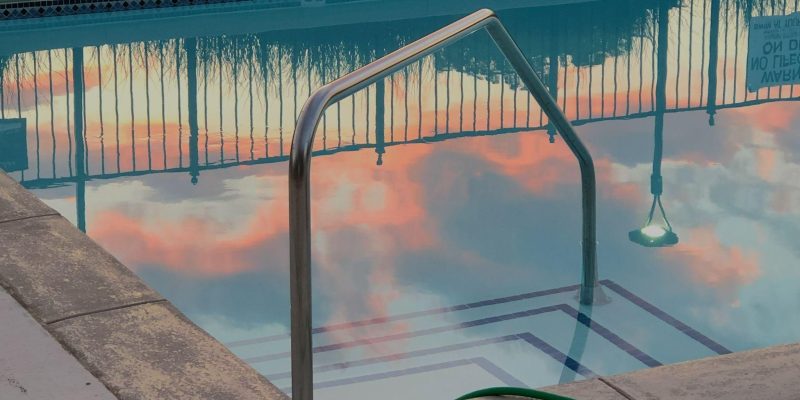
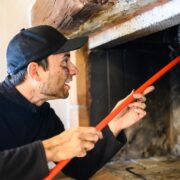
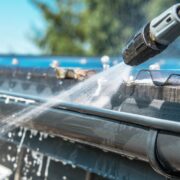
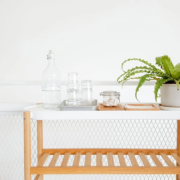
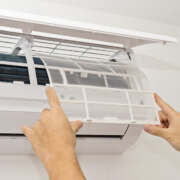
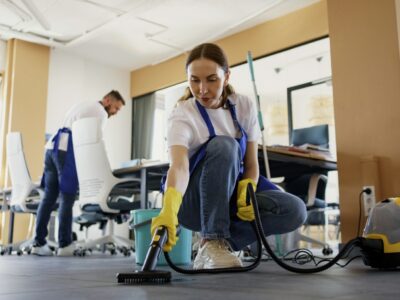
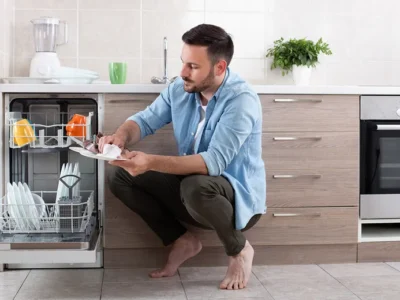
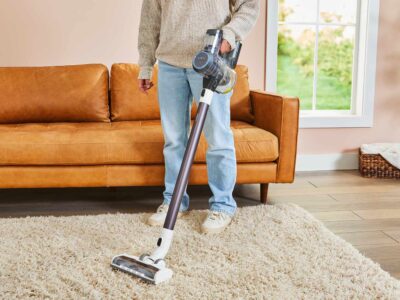
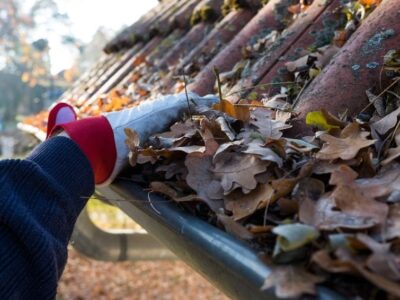
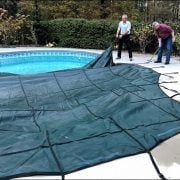
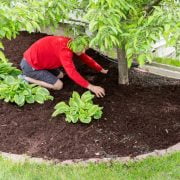
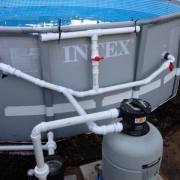
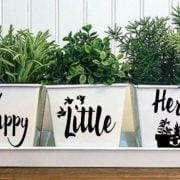
Comments